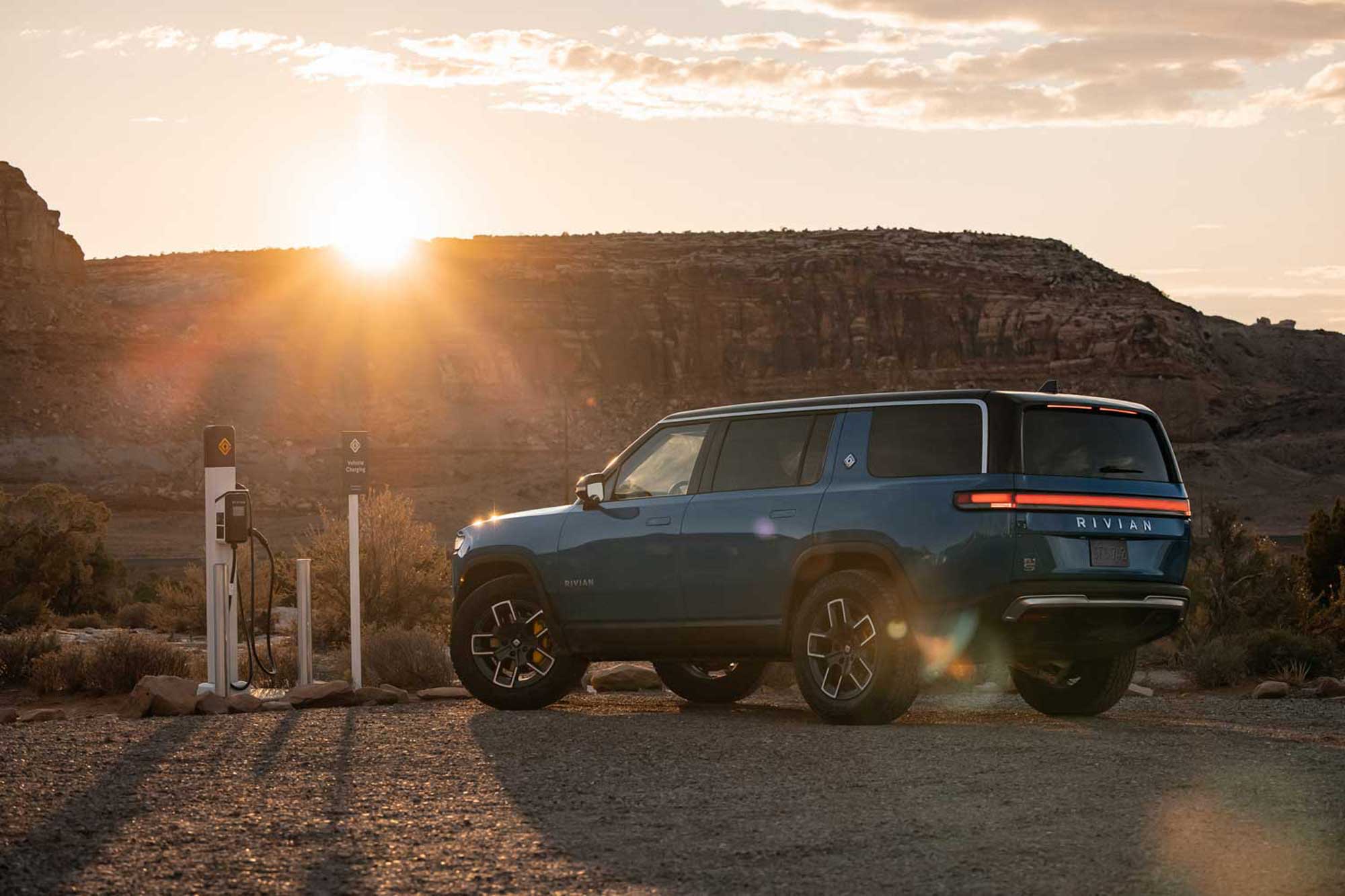What You Need to Know About EV Batteries
From range to battery life to charging, here's the skinny on what's powering your electric car.
 Rivian
Rivian
If you're considering purchasing an electric vehicle (EV), you may have a few questions about the battery concerning its range, how to charge it, the maintenance needs or when to replace it. There are a few aspects to consider in the search for your ideal EV.
Battery Basics
An EV uses a lithium-ion battery, similar to the one in a smartphone. This battery stores the electricity needed to power the car's electric motors. With no moving parts, the battery doesn't require maintenance, but it will degrade over time and cause range to drop by 1 or 2% every year.
Automakers denote battery size in kilowatt-hours, which is the amount of energy needed to run a 1,000-watt machine for one hour. You can think of it as an indication of storage capacity. An 80-kWh battery holds less electricity than a 100-kWh pack, for example.
Range
Battery capacity affects range — how far a vehicle can go on a full charge — but it's not the only factor. The weight and shape of the vehicle matter, as do driving conditions, external temperature, driving style, and even tire choice.
Most EV batteries provide between 200 and 300 miles of range. However, there are some outliers: The 2023 Mazda MX-30, with its tiny 37-kWh battery, can go only 100 miles before it needs a charge. Meanwhile, the 112-kWh pack in the 2024 Lucid Air Grand Touring can keep you on the road for up to 516 miles.
Mazda could put a bigger battery in the MX-30, but that would add cost — something buyers aren't willing to accept on an economy vehicle — as well as weight, potentially resulting in a less efficient vehicle overall. That's because the heavier the vehicle is, the more energy it needs to move. If the gain in energy storage doesn't make up for the gain in heft, you'd end up with a vehicle that takes longer to charge and uses its energy more quickly.
Level 2 Charging
You can use a common household, 120-volt outlet to charge your EV, but it'll take a while. If you're interested in long-term EV ownership, you may want to invest in a Level 2, 240-volt charging station for your home. Such units may require professional installation, and the charging rate will depend on the amperage of your electrical panel.
Whether your vehicle can accept the station's maximum charging rate is another story. It will depend on your car's onboard charger — that is, the device in your EV that converts the alternating current from your home to the direct current required by the battery.
Level 3 Charging
If your car allows for fast charging, you can use Level 3 equipment. These are public charging stations that put out DC power. This means the electrons can go straight into the battery without first passing through the onboard charger, dramatically speeding up the process. Some Level 3 units can provide up to 350 kilowatts of power.
Note that while a station may be capable of 350-kW charging, it might not always provide it. The charging rate may vary throughout your session based on the ambient temperature, the health and state of charge of the battery, and the power demands on the charging equipment.
While Level 3 charging is nice for road trips, it's not something you'll want to use every day. That could accelerate battery degradation.
The Sweet Spot for Battery Longevity
Why is the sweet spot for battery charging 20 to 80% and not zero to 100%? It's a good idea to keep your battery between a 10 and 90% state of charge, because fully draining and topping off your battery regularly will speed up degradation. Also, charging to 100% can produce a lot of heat and elevates fire risk. To prevent overcharging, many automakers program their EVs to accept slower charging rates once the battery reaches 80%.
Battery Warranties and Replacement Costs
Many manufacturers offer the federally mandated eight-year/100,000-mile warranty on their EV batteries, but a few go higher on mileage. Tesla guarantees its batteries in the Model S and Model X for 150,000 miles. Rivian does even better, covering its packs for up to 175,000 miles.
These extended warranties are a boon for owners, as replacing an EV's battery can be an exorbitant cost, running anywhere from $5,000 to $15,000 plus labor.
Written by humans.
Edited by humans.
 Emme Hall
Emme HallEmme Hall loves small convertibles and gets out to the canyons in her 2004 Mazdaspeed Miata whenever she can. You can also find her in the dirt in her lifted (yes, that's right) 2001 Mazda Miata, or racing air-cooled Volkswagens in races like the Baja 1000. She's taken first place twice in the Rebelle Rally — once driving a Jeep Wrangler and then a Rolls-Royce Cullinan the second time. She was also the first driver to take an electric vehicle to the Rebelle Rally when campaigning the Rivian R1T to a top-five finish.
Related articles
View more related articles